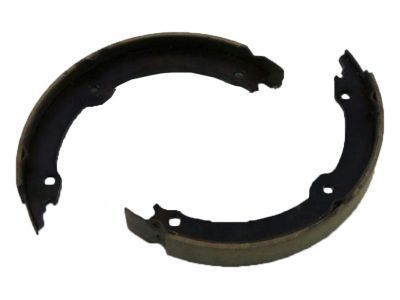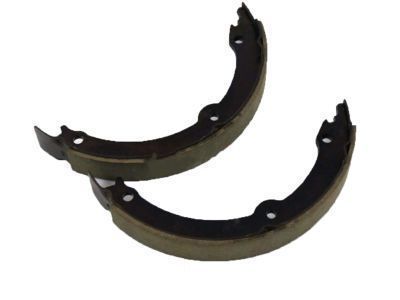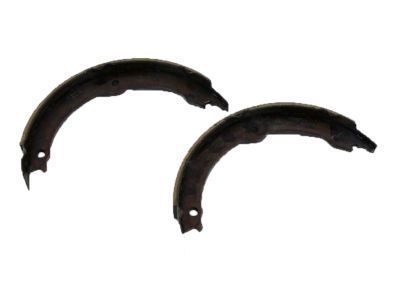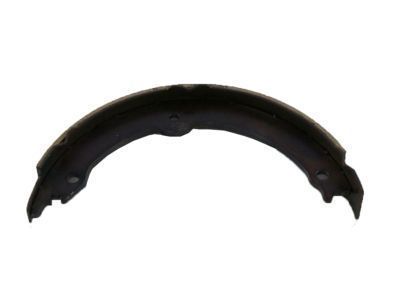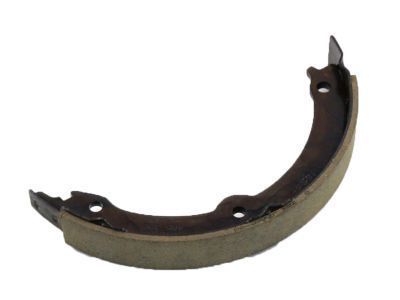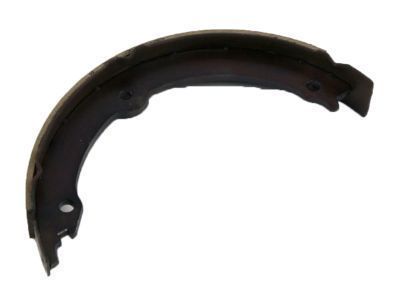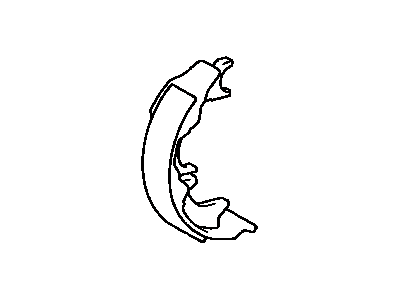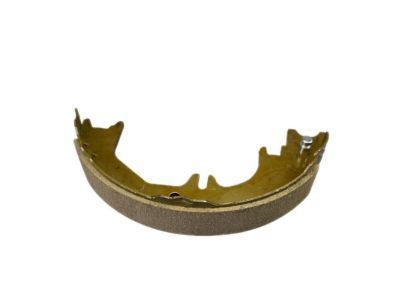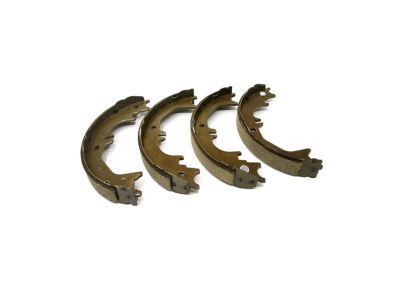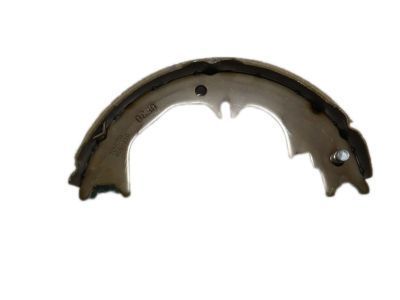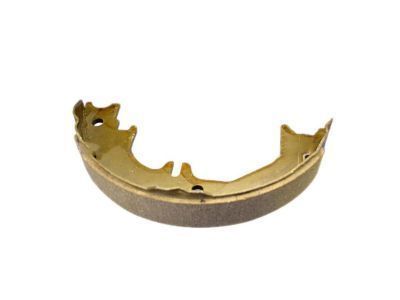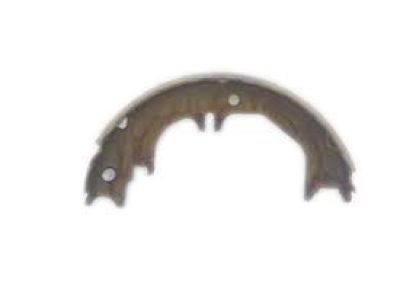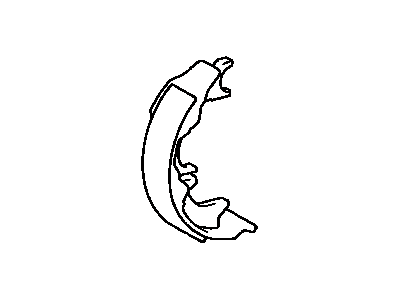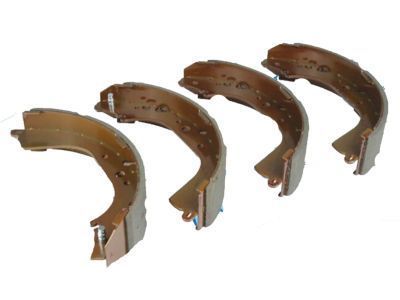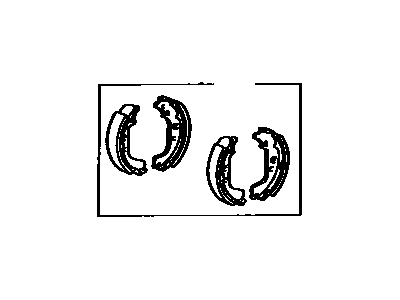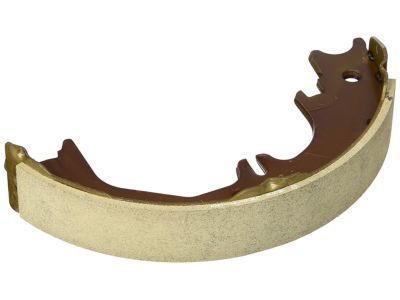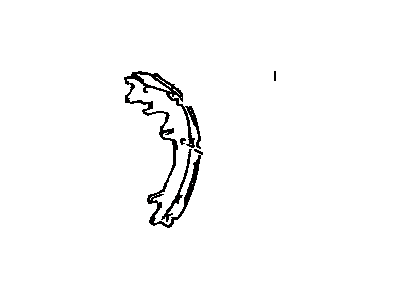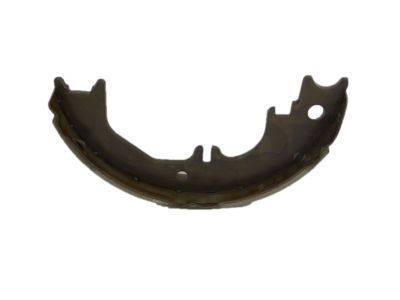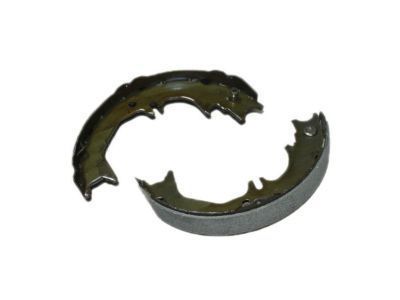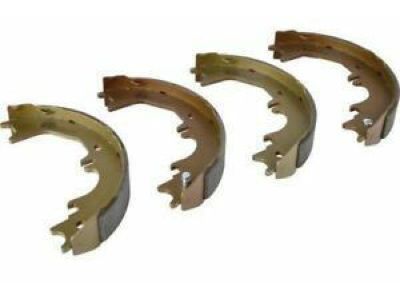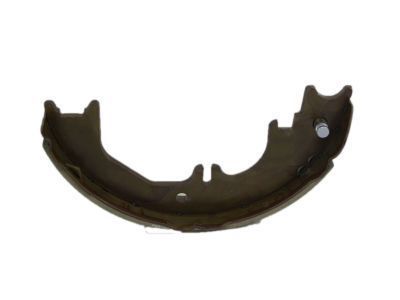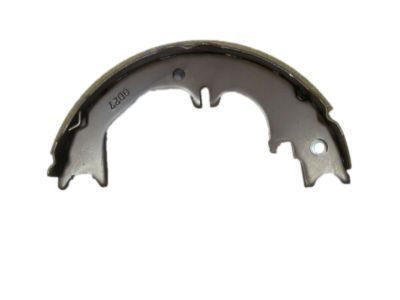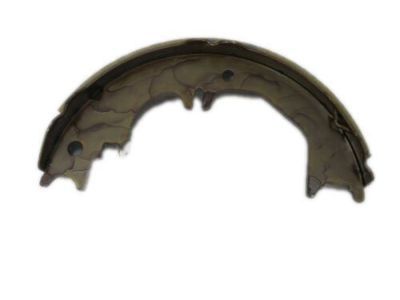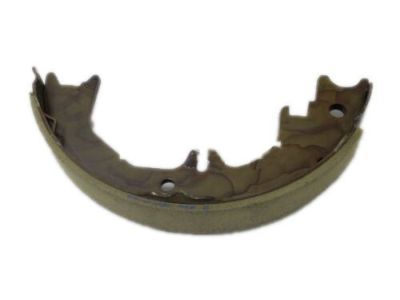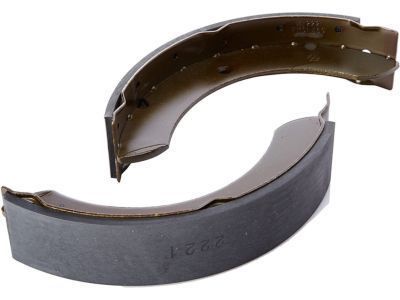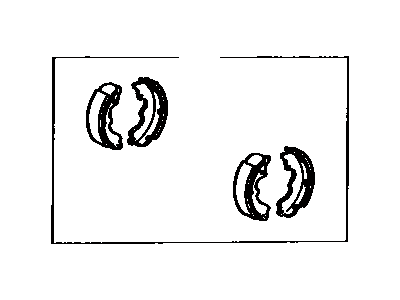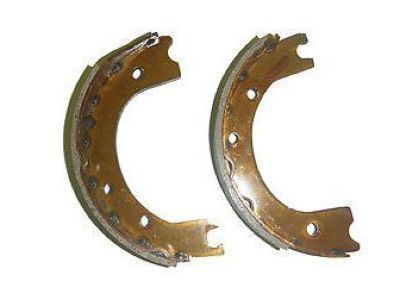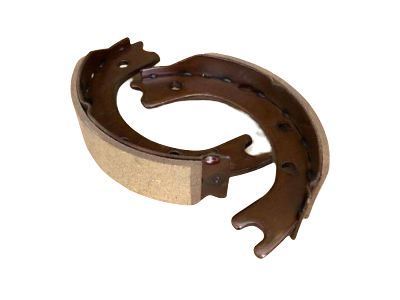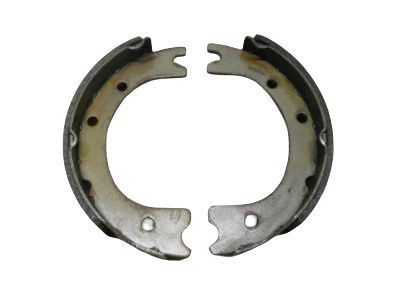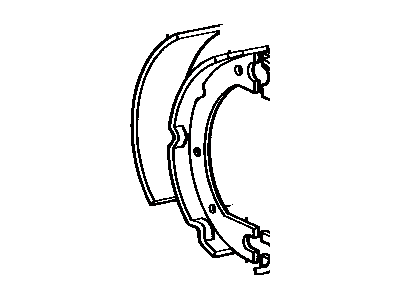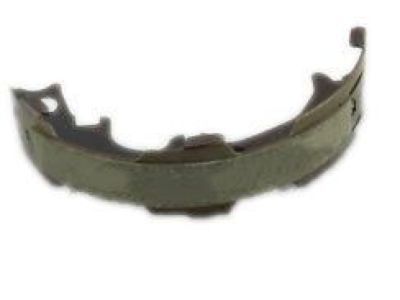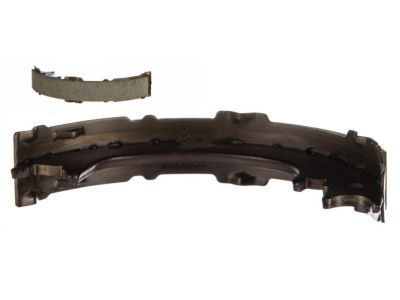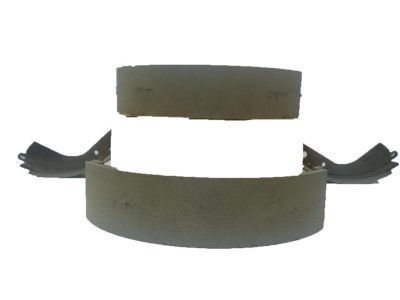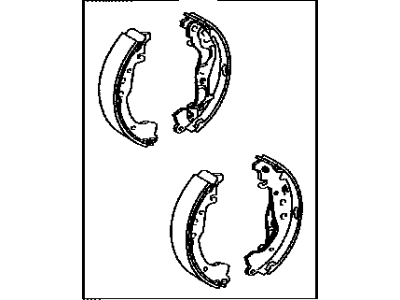

My Garage
My Account
Cart
Genuine Toyota Land Cruiser Brake Shoe Set
Brake Shoe- Select Vehicle by Model
- Select Vehicle by VIN
Select Vehicle by Model
orMake
Model
Year
Select Vehicle by VIN
For the most accurate results, select vehicle by your VIN (Vehicle Identification Number).
17 Brake Shoe Sets found
Toyota Land Cruiser Shoe Assembly, Parking Brake, LH
Part Number: 46530-34010$31.88 MSRP: $44.56You Save: $12.68 (29%)Ships in 1 Business DayToyota Land Cruiser Shoe Assembly, Parking Brake, RH Or Center
Part Number: 46540-60050$45.92 MSRP: $64.19You Save: $18.27 (29%)Ships in 1-3 Business DaysToyota Land Cruiser Shoe Assembly, Parking Brake, LH
Part Number: 46550-60060$45.33 MSRP: $63.36You Save: $18.03 (29%)Ships in 1-3 Business DaysToyota Land Cruiser Shoe Assembly, Parking Brake, LH
Part Number: 46580-60050$45.92 MSRP: $64.19You Save: $18.27 (29%)Ships in 1-3 Business DaysToyota Land Cruiser Rear Brake Shoe Kit
Part Number: 04495-60010$90.26 MSRP: $127.23You Save: $36.97 (30%)Ships in 1-3 Business DaysToyota Land Cruiser Shoe Assembly, Parking Brake, LH
Part Number: 46550-60040$36.52 MSRP: $51.05You Save: $14.53 (29%)Ships in 1-3 Business DaysToyota Land Cruiser Shoe Assembly, Parking Brake, RH Or Center
Part Number: 46540-60030$39.02 MSRP: $54.53You Save: $15.51 (29%)Ships in 1-3 Business DaysToyota Land Cruiser Shoe Assembly, Parking Brake, RH Or Center
Part Number: 46540-60031$45.92 MSRP: $64.19You Save: $18.27 (29%)Ships in 1-3 Business DaysToyota Land Cruiser Shoe Assembly, Parking Brake, LH
Part Number: 46580-60030$39.02 MSRP: $54.53You Save: $15.51 (29%)Ships in 1-3 Business DaysToyota Land Cruiser Shoe Assembly, Parking Brake, LH
Part Number: 46580-60031$45.92 MSRP: $64.19You Save: $18.27 (29%)Ships in 1 Business DayToyota Land Cruiser Shoe Assembly, Parking Brake, LH
Part Number: 46550-60041$45.33 MSRP: $63.36You Save: $18.03 (29%)Ships in 1 Business DayToyota Land Cruiser Shoe Kit, Front Brake
Part Number: 04494-60010$90.14 MSRP: $127.06You Save: $36.92 (30%)Ships in 1-2 Business DaysToyota Land Cruiser Shoe Assembly, Parking Brake, RH Or Center
Part Number: 46550-60011$28.19 MSRP: $39.40You Save: $11.21 (29%)Toyota Land Cruiser Shoe Assembly, Parking Brake, RH Or Center
Part Number: 46550-60010$28.19 MSRP: $39.40You Save: $11.21 (29%)Ships in 1-3 Business DaysToyota Land Cruiser Shoe Assembly, Parking Brake, RH Or Center
Part Number: 46550-35020$28.19 MSRP: $39.40You Save: $11.21 (29%)Ships in 1-3 Business DaysToyota Land Cruiser Rear Brake Shoe Kit
Part Number: 04495-60060$90.26 MSRP: $127.23You Save: $36.97 (30%)Toyota Land Cruiser Rear Brake Shoe Kit
Part Number: 04495-60011$90.26 MSRP: $127.23You Save: $36.97 (30%)Ships in 1-3 Business Days
Toyota Land Cruiser Brake Shoe Set
If you are in demand for superior quality and affordable OEM Toyota Land Cruiser Brake Shoe Set, then shop with us! We own a wide range of the reduced-priced genuine Toyota Land Cruiser Brake Shoe Set. You can purchase in confidence as all parts come with a manufacturer's warranty. Any issues with our products? No need to worry as we have a hassle-free return policy to guide you every step of the way.
Toyota Land Cruiser Brake Shoe Set Parts Questions & Experts Answers
- Q: How to Properly Remove and Replace a Brake Shoe Set on a Toyota Land Cruiser?A:Loosen the wheel lug nuts, raise the front or rear of the vehicle, and support it securely on jackstands while blocking the wheels at the opposite end to prevent rolling. Release the parking brake and remove the wheel and brake drum. If the drum is difficult to pull off, ensure the parking brake is fully released, then apply penetrating oil at the hub-to-drum joint, allowing it to soak before attempting to remove the drum again. If it remains stuck, retract the brake shoes by removing the plug from the backing plate and turning the adjusting screw star wheel with a screwdriver to move the shoes away from the drum, marking the drum's relationship to the hub for balance. If the brake shoes are hanging up due to wear, use a screwdriver or adjusting tool to turn the star wheel and retract the shoes. Clean the brake assembly with brake cleaner and position a drain pan to catch fluid and residue, avoiding the use of compressed air. Inspect and replace dual leading type brake shoes or leading/trailing type brake shoes as needed, paying attention to the installation order. Before reinstalling the drum, check for cracks, score marks, deep scratches, and hard spots; if any issues are found, take the drum to an automotive machine shop for resurfacing, as professionals recommend this with each brake job. If resurfacing is not an option, remove any glaze with sandpaper or emery cloth. Install the brake drum on the axle flange and check the preliminary brake adjustment, ensuring the drum fits snugly over the shoes. Mount the wheel, install the lug nuts, and lower the vehicle. Make several forward and reverse stops while operating the parking brake to adjust the brakes for satisfactory pedal action, and carefully check the operation of the brakes before driving.
Related Toyota Land Cruiser Parts
Browse by Year
2021 Brake Shoe Set 2020 Brake Shoe Set 2019 Brake Shoe Set 2018 Brake Shoe Set 2017 Brake Shoe Set 2016 Brake Shoe Set 2015 Brake Shoe Set 2014 Brake Shoe Set 2013 Brake Shoe Set 2012 Brake Shoe Set 2011 Brake Shoe Set 2010 Brake Shoe Set 2009 Brake Shoe Set 2008 Brake Shoe Set 2007 Brake Shoe Set 2006 Brake Shoe Set 2005 Brake Shoe Set 2004 Brake Shoe Set 2003 Brake Shoe Set 2002 Brake Shoe Set 2001 Brake Shoe Set 2000 Brake Shoe Set 1999 Brake Shoe Set 1998 Brake Shoe Set 1997 Brake Shoe Set 1996 Brake Shoe Set 1995 Brake Shoe Set 1994 Brake Shoe Set 1993 Brake Shoe Set 1992 Brake Shoe Set 1991 Brake Shoe Set 1990 Brake Shoe Set 1989 Brake Shoe Set 1988 Brake Shoe Set 1987 Brake Shoe Set 1986 Brake Shoe Set 1985 Brake Shoe Set 1984 Brake Shoe Set 1983 Brake Shoe Set 1982 Brake Shoe Set 1981 Brake Shoe Set 1980 Brake Shoe Set 1979 Brake Shoe Set 1978 Brake Shoe Set 1977 Brake Shoe Set 1976 Brake Shoe Set 1975 Brake Shoe Set 1974 Brake Shoe Set 1973 Brake Shoe Set 1972 Brake Shoe Set 1971 Brake Shoe Set 1970 Brake Shoe Set 1969 Brake Shoe Set
